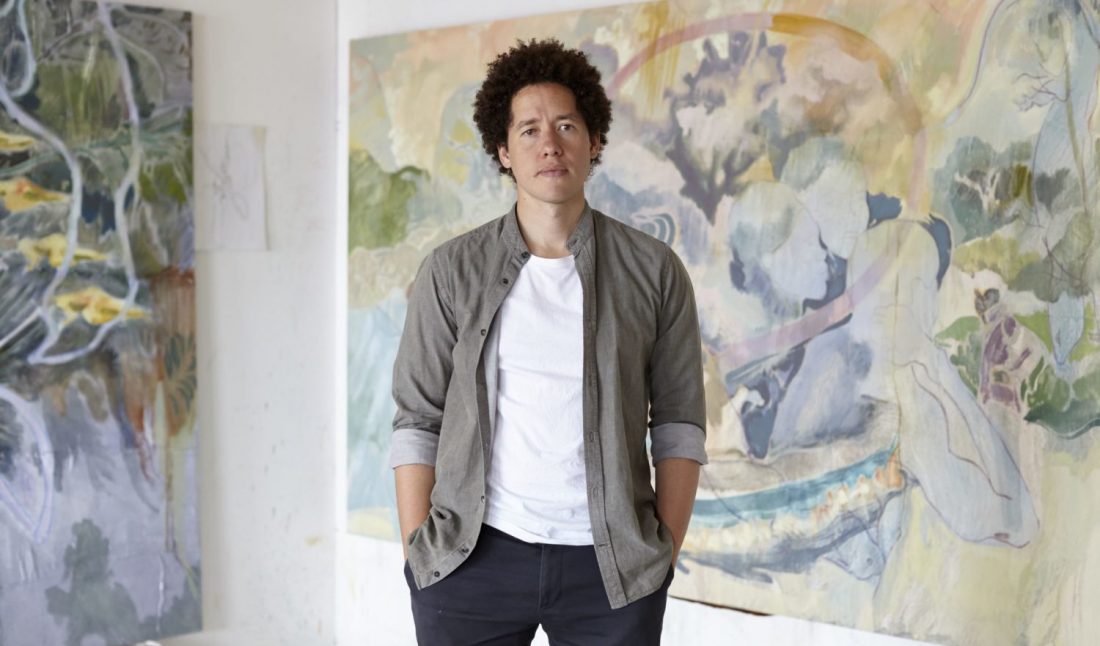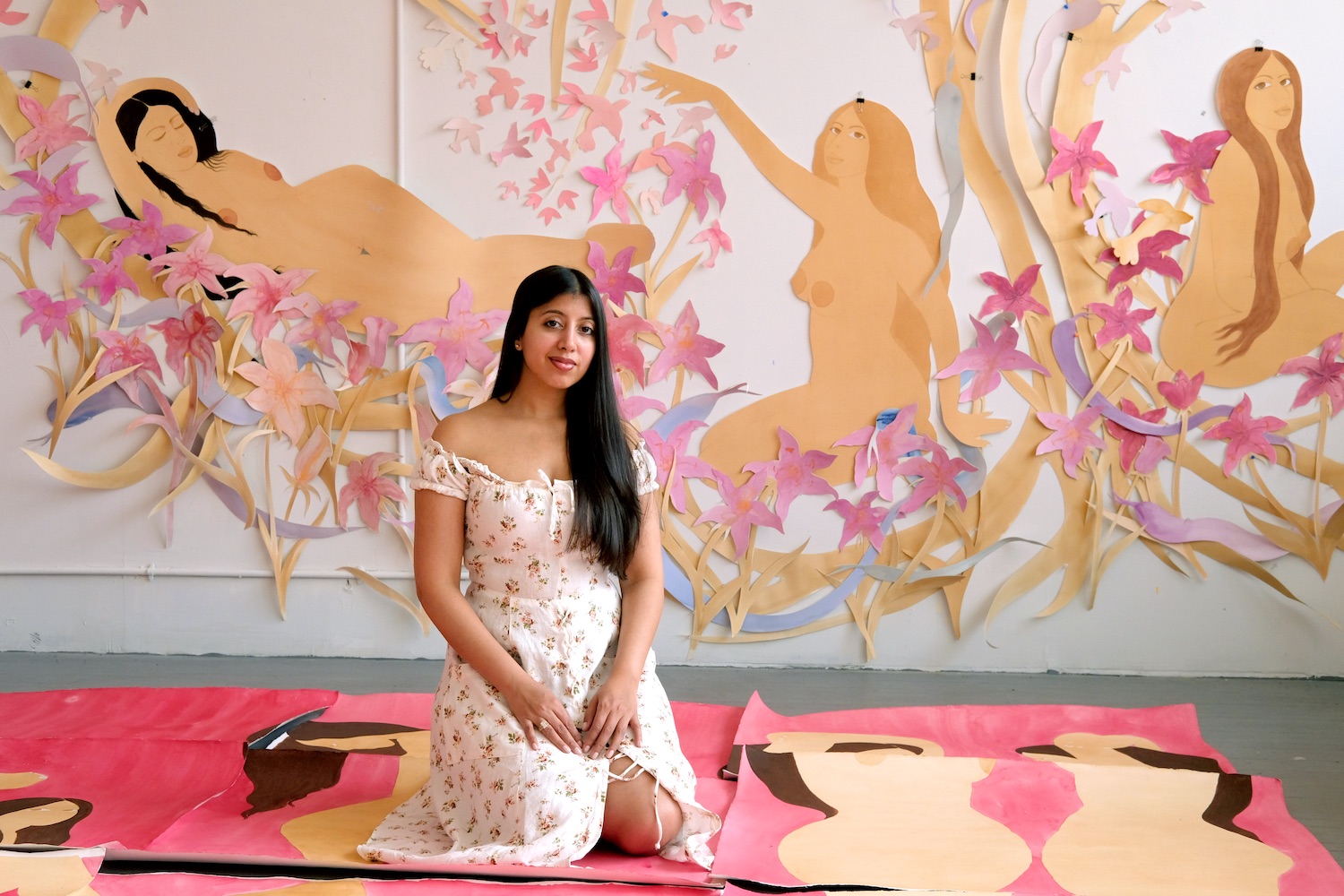This spring Michael Armitage’s “Paradise Edict” will grace the halls of the Royal Academy in London, the very place from which he received a postgraduate diploma a decade ago. On view in the exhibition, which debuted at Haus der Kunst in Munich late last year, are new paintings by the artist, as well as the work of several influential East African artists like Jak Katarikawe, Meek Gichugu, and Asaph Ng’ethe Macua.
Armitage splits his time between London and Nairobi, finding inspiration for his vibrant, image filled large-scale paintings in Kenya’s culture, landscape, and sociopolitical movements. While his work is filled with reference, allusion, and context, he has always been driven to make his work accessible, especially to a Kenyan audience. That motivation also inspired the recently established Nairobi Contemporary Art Institute (NCAI), a nonprofit art space dedicated to contemporary art in East Africa.
Armitage spoke with Whitewall early this year via Zoom from Nairobi, where he was working to launch the physical location of NCAI, as well as finding himself drawn to ideas around landscape.
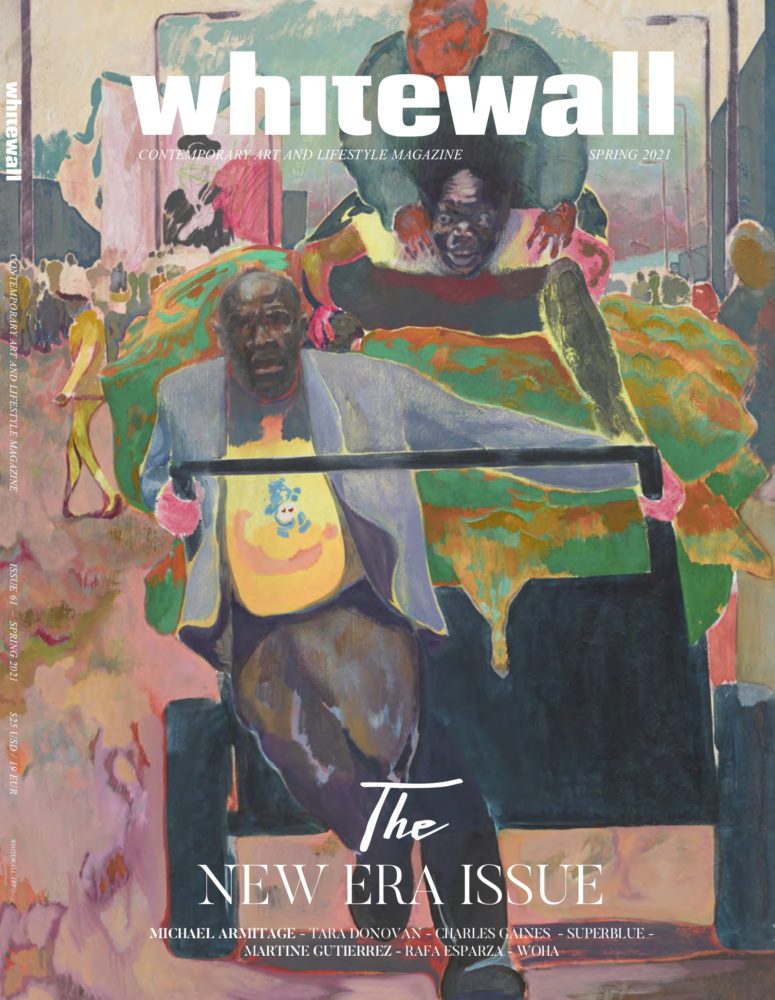 Michael Armitage, “Mkokoteni,” 2019, Oil on Lubugo bark cloth,
86 5/8 x 66 15/16 inches; © Michael Armitage, photo © White
Cube (Theo Christelis).
Michael Armitage, “Mkokoteni,” 2019, Oil on Lubugo bark cloth,
86 5/8 x 66 15/16 inches; © Michael Armitage, photo © White
Cube (Theo Christelis).
WHITEWALL: Your exhibition “Paradise Edict” debuted at Haus der Kunst in Munich, and will be at the Royal Academy in London this spring. How did the show come about?
MICHAEL ARMITAGE: It evolved throughout the COVID saga. Initially, the idea came from a rally that I went to where the leader of this opposition party kept saying, “I’m going to lead you to Canaan, the promised land.”
I was interested in the idea of Canaan, the idea of the promised land and its link to landscape and the representation of the land, and what that had meant somewhere like here, like Kenya, where land is quite contentious. There is a place in northeastern Kenya on our coast, very close to the Somali border, where there is quite a lot of conflict between the Kenya Defence Forces, the KDF, and the militant group the al-Shabaab from Somalia. That part of Kenya is so beautiful. It’s peppered with little islands with some ten miles of unspoiled beaches. And then inland its beautiful palm trees, a forest called the Boni forest, which until these recent conflicts was relatively unspoiled, untouched. It held this idea of paradise, or certainly stories of paradise.
The thing that was interesting for me is how contested and problematic that space was, and when you look at a place that is considered paradise, it often comes with a lot of human conflict within it. So I started on a series of landscape paintings, one of which was called the Paradise Edict, and this show then takes its name from that.
WW: How did that work inspire the other paintings in the show?
MA: The idea was then to bring in different aspects of my practice that have loosely dealt with ideas around paradise. For example, there is another painting called Antigone; although that isn’t a representation of paradise, it was about this idea of a right way of behaving so you could obtain some sort of status in society. It’s about reaching for something. And in that sense, all the paintings have some link, either through landscape, through the political rallies, or in the more allegorical paintings which are linked to Greek myths or sociopolitical events in Kenya.
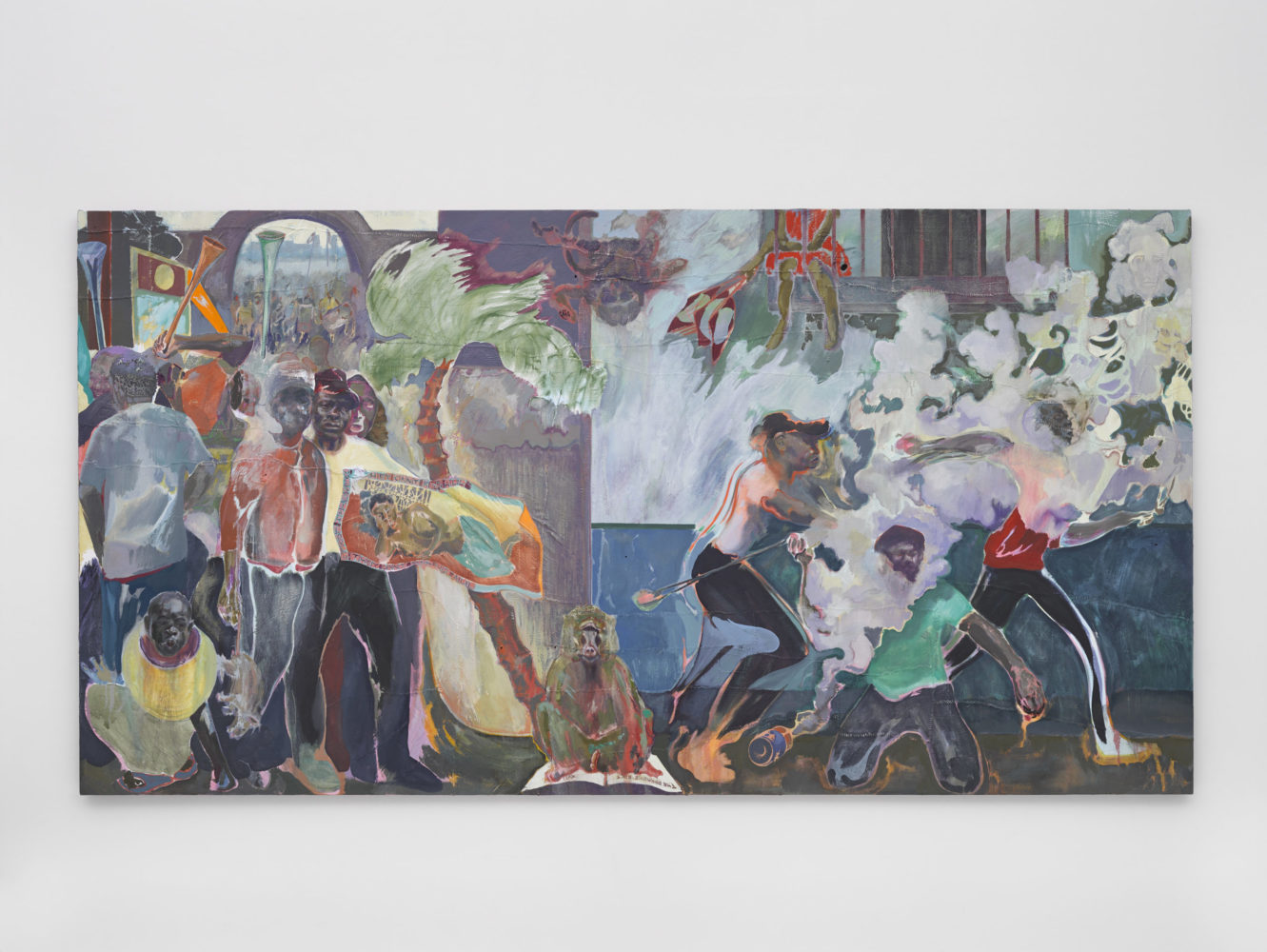 Michael Armitage, “The promised land,” 2019, installation view of “Michael Armitage. Paradise Edict” at Haus der Kunst, 2020, photo by Markus Tretter.
Michael Armitage, “The promised land,” 2019, installation view of “Michael Armitage. Paradise Edict” at Haus der Kunst, 2020, photo by Markus Tretter.
WW: Your paintings are shown alongside a selection of work by Meek Gichugu, Elimo Njau, Theresa Musoke, Jak Katarikawe, Asaph Ng’ethe Macua, and Sane Wadu. Can you tell us about your relationship with these artists?
MA: For me it was a particularly special moment to have. One, because a lot of the work that’s in that show is borrowed from German collections, both institutional and private. And it’s work I’ve seen images of but I’ve never actually seen. It’s stuff that I’d grown up looking at. Particularly one artist, Jak Katarikawe; I’ve always loved his work, and he’s the most significant in terms of influence artists from East Africa. To see these paintings have their space, and also in context, was the thing that was really important for me. They are the artists which, when I started making work, I was heavily influenced by.
WW: And this part of the exhibition is related to the new nonproft art space you’ve opened in Nairobi, the Nairobi Contemporary Art Institute (NCAI), right?
MA: Last year we started the Nairobi Contemporary Arts Institute and we, sadly, weren’t able to open our space because of the pandemic. So we were repositioning ourselves and trying to figure out how an arts institute without a space can function in the best way. One side of that was to do some fundraising for health initiatives and other cultural initiatives that needed support. And the other part was to try and do offsite exhibitions.
When I was offered a considerably larger space than what we were going to initially have at the Haus der Kunst, I thought instead of pulling a few more of my paintings, to use that as an opportunity to explore what is in the German collections.
We started from the earliest paintings from late forties, early fifties by Asaph Ng’ethe Macua, who studied at Makerere University in Kampala, and then it progresses from him to Elimo Njau, who set up an arts institute that really was the hub for artists in East Africa for decades until the late nineties, when it burnt down. Theresa Musoke was a great teacher as well as an artist who studied at Makerere. And then you have Jak, who was the first guy, was the first one that had commercial success in Nairobi, that paved the way for a lot of the other artists that learnt through doing workshops and other forms of learning and being exposed to art.
I’ve studied a lot from all of them, personally, and one painting in particular, No Erotic Them Say by Meek Gichugu, is one of the greatest paintings I’ve ever seen.
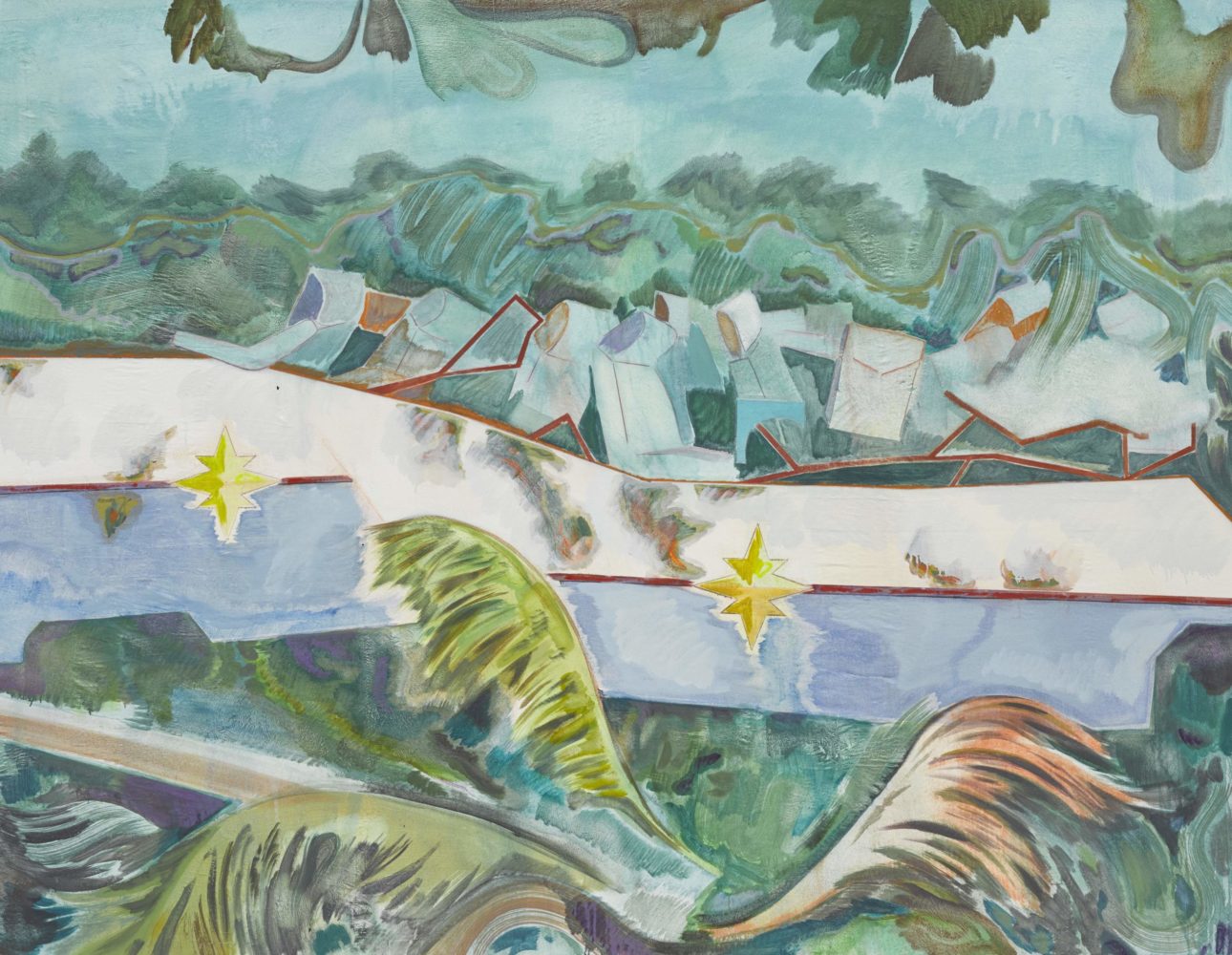 Michael Armitage, “Accident,” 2015, oil on Lubugo bark cloth, 67 x 87 inches, photo © White Cube (George Darrell), © Michael Armitage.
Michael Armitage, “Accident,” 2015, oil on Lubugo bark cloth, 67 x 87 inches, photo © White Cube (George Darrell), © Michael Armitage.
WW: Why were you interested in creating NCAI, and what is your vision for it?
MA: When I was studying I was frustrated because I never got to speak with artists from the continent. And so when I was in a position to be able to reach out and organize something in 2017, myself and Mukami Kuria also helping with NCAI, set up a gathering where we had 52 artists from 12 different countries on the continent come together for a long weekend. In the process of that, I had really wanted students to be part of it. I was talking to quite a few different art students, at a couple places in Nairobi, and none of them knew any of the artists that were shown before 2005. And I was a little bit shocked, but then when I thought about it, it made sense because none of those artists have much of a commercial career at the moment. There is no institute in Nairobi that is dedicated to showing their work.
So one of the questions I kept asking both artists that were present at the gathering but also people I know around, was what would be the most impactful thing we could have? And the two things that came up were education and some sort of not for proft space that has a historical element to it to show some of the older artists, as well as show ambitious shows of younger artists. So that’s a little bit more ambitious than bringing people together for a long weekend, but I’ve been slowly working toward that.
When our director, Ayako Bertolli, came on board, and a couple other people, it made it possible that it could happen. We’re hoping to open in April, exactly a year after our initial plans.
WW: When you’re in Kenya, part of your time is travel and drawing and sketching, then part of your time is in the studio. Where are you in that process now?
MA: Because we’re just getting everything ready in NCAI, I’m doing quite a bit of that. I started a few paintings because I’m here for considerably longer than I had initially anticipated. I’m in between painting and drawing at the moment. I have a studio here, so I’ve got a few things on the go. Because I’d been thinking about landscape quite a lot, I thought it was important for some of the paintings to actually be made in situ. The work I have at the moment in Nairobi, a lot of it has been made in situ as opposed to from drawings and images to see how that also affects the work.
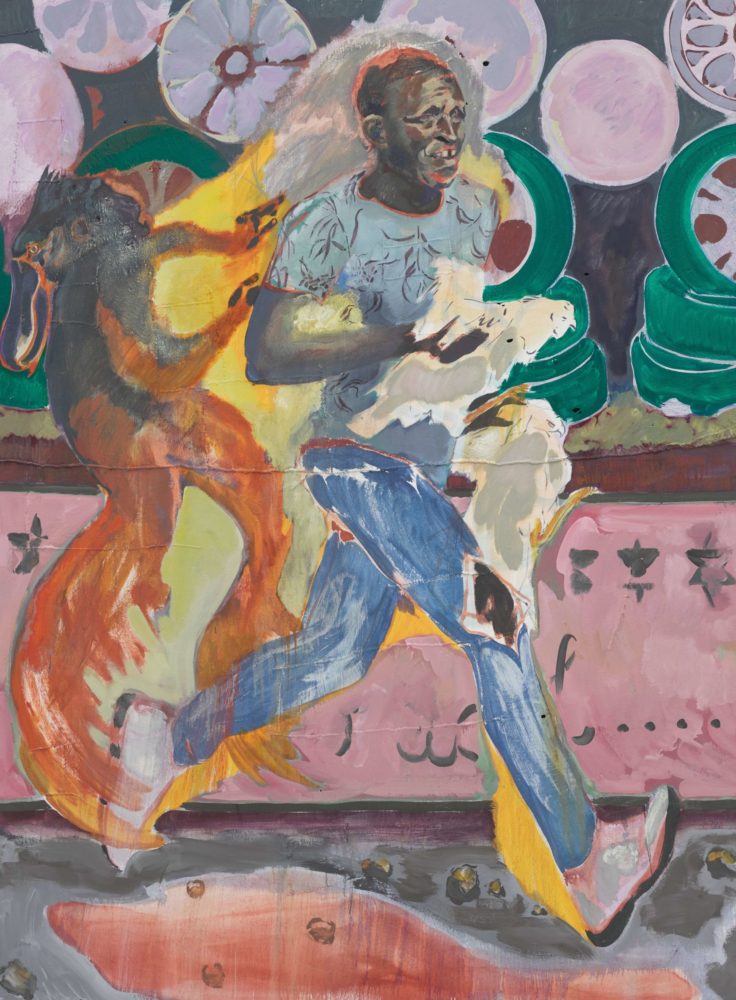 Michael Armitage, “The Chicken Thief,” 2019, oil on Lubugo bark cloth 78 3/4 x 59 1/16 inches, photo © White Cube (Theo Christelis), © Michael Armitage.
Michael Armitage, “The Chicken Thief,” 2019, oil on Lubugo bark cloth 78 3/4 x 59 1/16 inches, photo © White Cube (Theo Christelis), © Michael Armitage.
WW: Have you done that before, made work in situ?
MA: An Account of an Illiterate Man—it’s the most recent painting I just finished, where the landscape was done in situ. It’s a landscape I’ve painted a lot of times and sketched. I wanted to see the effect, and it does, something shifts, something changes in that. I’ve been thinking about this idea of a cultural history contained within the landscape and this link to the past, as well as contemporary sociopolitical issues and pressures on man. It felt important that the landscapes themselves were real, that it wasn’t an idea of place; it was the place.
WW: Will the final piece be a landscape?
MA: I’m not sure! You never know. Sometimes they change.
WW: Has working on NCAI impacted your painting practice?
MA: Just time! But apart from that, it hasn’t. What’s been great is to have to really think about and engage in a lot of other artists’ practices. I have always done that, just never with this intensity we’re having to do now. And it’s all very well saying there is an arts institute, but what does that really mean? Thinking about what, from my position as an artist, what are the things that an arts institute should provide? That’s been interesting.
I feel lucky to have shown in quite a few institutions recently, seeing how important education is, and an audience, and growing an audience. In somewhere like Kenya where art doesn’t have a large presence, there are really a lot of challenges for creating and sustaining an audience. But at the same time, there’s so much enthusiasm here for this and for anything that different and challenging that it makes it exciting to be trying to do this. It’s difficult, but it’s an exciting challenge.
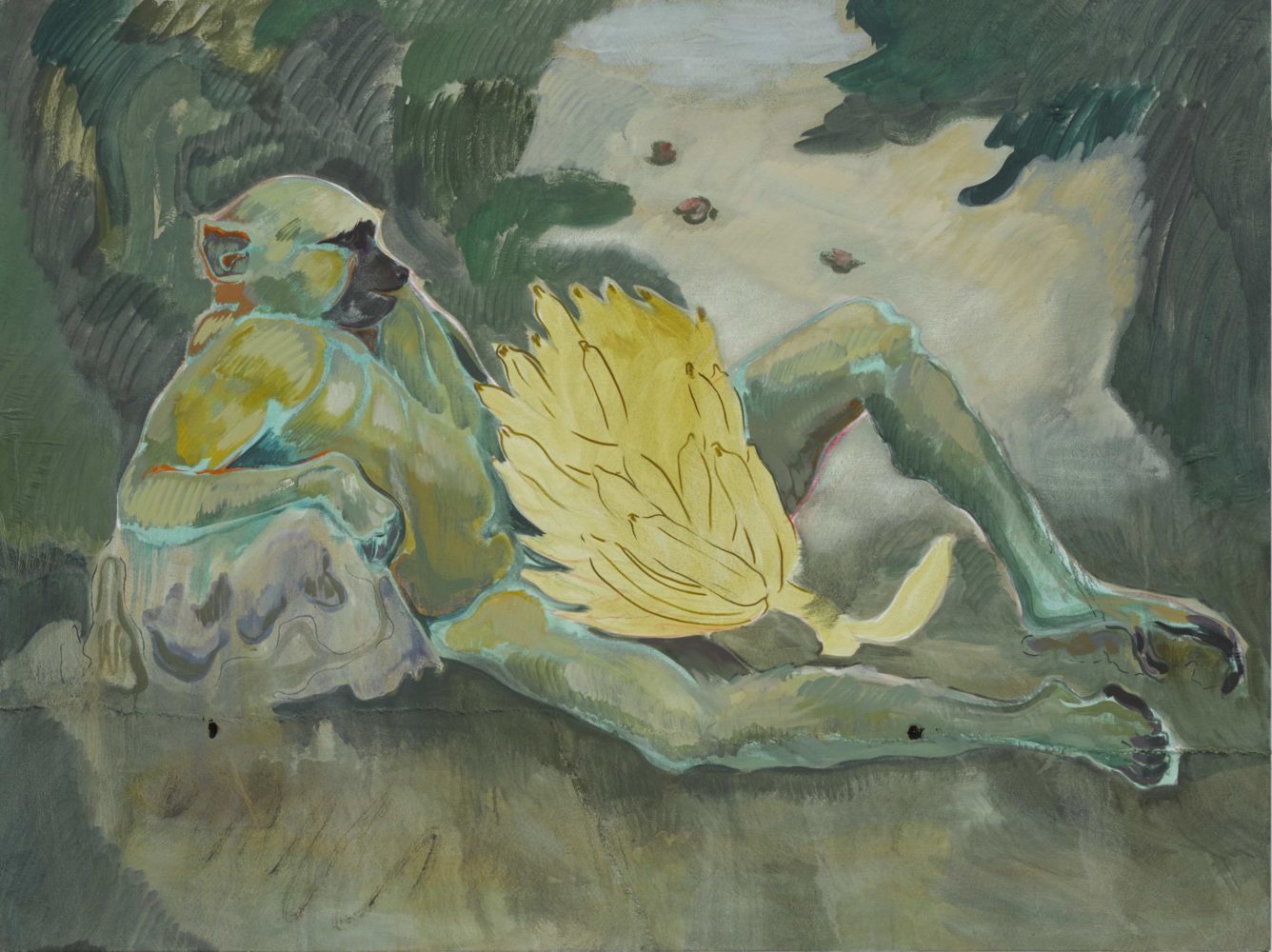 Michael Armitage, “Baboon,” 2016, oil on Lubugo bark cloth, 59 1/16 x 78 3/4 inches, photo © White Cube (Ben Westoby), © Michael Armitage.
Michael Armitage, “Baboon,” 2016, oil on Lubugo bark cloth, 59 1/16 x 78 3/4 inches, photo © White Cube (Ben Westoby), © Michael Armitage.
WW: You’ve said that when you’re painting, you think of a Kenyan audience first, wanting to make work that anyone get something from. As you talk about NCAI, there are similar ideas and questions there.
MA: Yes, for sure. Also, that idea of trying to engage a Kenyan audience came out of realizing through studying in the U.K. that you can’t expect everyone to understand everything that you’re doing and that histories do change, and subsequently, paintings change and how they are read changes in ways you can’t control as an artist. But the things I did want to control were the stories and the people here. As an artist, I believe in the position of art in people’s lives and in society, and the space that it gives you to reflect to find something in common. Art gives you a very profound and different space to contemplate ideas, to be moved by something, than any other medium. That space wasn’t available here. It is available in different ways, but in the same way in my art that I wanted it to be able to speak directly to people here, it feels that art should have the space here.
WW: Especially now, having had so little physical access to art for the past year, we appreciate the ability to be in the presence of art.
MA: Yeah, absolutely! I’m with you on that—of other people’s art particularly for me. I’ve seen plenty of my own.







